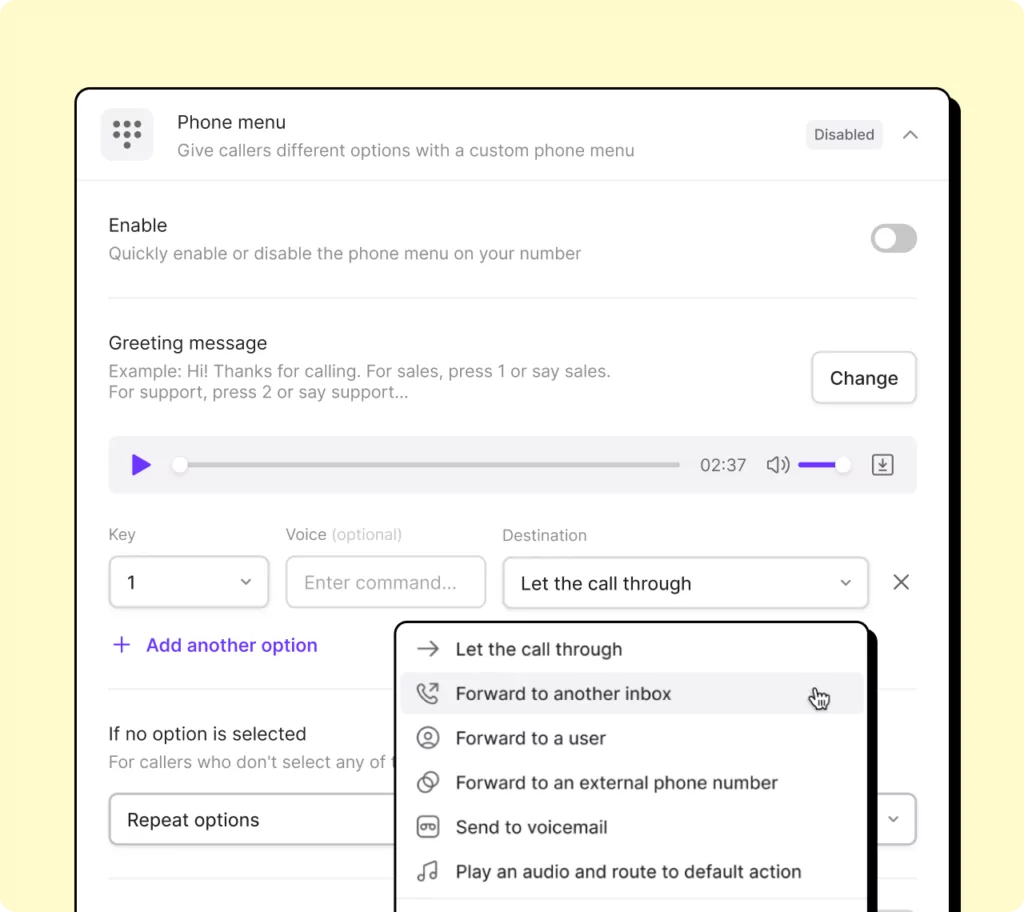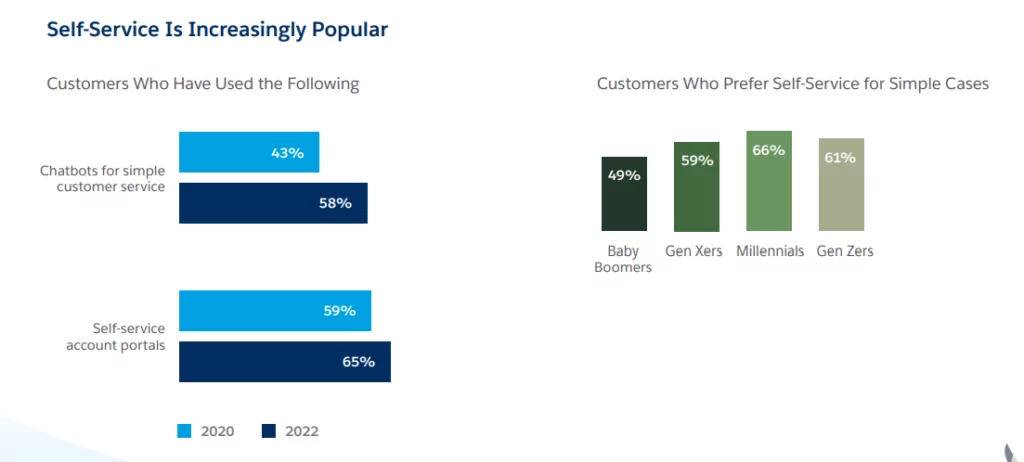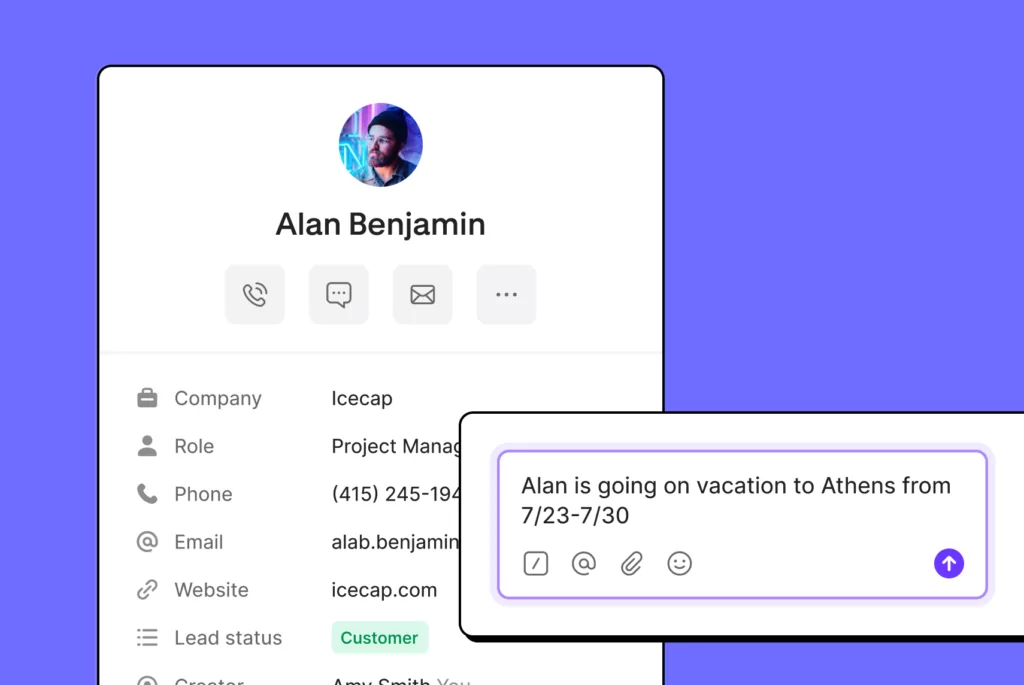Every customer relationship starts with trust. A potential customer believes your product or service will meet their expectations, they hand over the Benjamins, and a long-lasting partnership is born.
But no company’s product or service is perfect. What happens when customer expectations aren’t met? And miscommunications, product defects, tech issues, or price increases start to rub your customers the wrong way?
Enter the “Trust Thermocline,” a term coined by historian John Bull to describe the threshold where the customer’s lack of trust in your ability to meet their expectations outweighs the effort required to find a new provider. Despite their financial investment and emotional attachment, they’ll leave your brand for good.
In this article, we’ll look at what causes customer dissatisfaction so you can win back customer trust and get your business back on track.
9 causes of customer dissatisfaction and how to solve them
You might be dealing with a variety of reasons for dissatisfied customers, and you need a unique approach for each of them. Let’s look at nine factors that trigger dissatisfaction and how you can prevent them.
1. Frustration from too many back-and-forth conversations
If you’ve ever been a customer on the receiving end of a customer care email thread, you know how frustrating (and repetitive) they can be. The first few emails confirm account information or complaint details, and then you have to wait for a resolution. If another issue pops up, you have to start the process again.
Unnecessary back-and-forth interactions can be prevented by training your teams in quick issue resolution. Document in your standard operating procedures when it makes sense to escalate an issue from an email to a phone call. It’s often easier to handle a complaint over a 10-minute phone call than in several emails.
Pro tip: Encourage reps to read a customer’s conversation history (via the CRM or a teammate) before getting on a call with them. This way, they’re better equipped to talk about the issue and offer solutions. With OpenPhone’s AI call summaries and shared inboxes, you get a comprehensive customer overview in one place.
2. Slow customer support response times
High call volume, overwhelmed reps, and poor call flows can bog down your team and cause slow response times.. While any business can have busy seasons, getting a handle on response times is paramount for customer retention.
Here are three strategies that can help:

- Analyze your phone’s analytics dashboard for patterns of peak call times and schedule more customer support shifts for those periods.
- Hire temporary support reps for seasonal surges during holiday seasons and marketing initiatives.
- Implement an Interactive Voice Response (IVR) system to efficiently route calls and quickly answer common questions. This way, you free up your agents to deal with more complex issues.
Pro tip: Add an auto-reply on your phone system for when customers call during business hours and no one picks up. This way, customers will know when to expect a response or how to get help immediately in an emergency. OpenPhone users can set up custom voicemails during and outside of business hours, as well.
3. Setting unrealistic expectations
Whether failing to resolve a ticket by a specific date or committing to a follow up and not getting in touch with the customer — not meeting expectations can cause customers to lose trust.
If you can’t commit to a specific date or time, let your customer know. Offer a timeline instead, such as five to ten business days, and keep them in the loop by sending status updates.
💡Pro tip: Encourage your reps to create a to-do list immediately after each customer call so important details and follow ups don’t fall through the cracks. OpenPhone automatically generates a list of action items after every call so your reps can quickly help the next customer without losing momentum.
4. Unhelpful interactions
Your customer-facing teams are your first line of defense in preventing dissatisfaction. If your reps are burnt out because of excessive workloads or micro-managers, it can show up as being hurried and unhelpful during customer conversations.
To ease their stress, encourage reps to report tricky situations before they reach their tipping points. To prevent situations like these from arising, empower your employees with training and QA programs.
“Invest in comprehensive training programs that emphasize empathy and problem-solving skills and empower representatives to address diverse customer needs appropriately.”
Alari Aho, CEO and Founder of Toggl
During training, educate reps on how to best use self-serve resources, like a customer service training manual. Then they can quickly refer to established best practices to solve customer challenges.
5. Lack of self-service materials
Customer service reps aren’t the only ones who can benefit from self-serve resources — your customers can, too. Fifty-nine percent of customers say they prefer self-serve materials to solve simple issues.

Depending on your business’s product or service, creating self-serve customer support materials can be a hefty upfront investment of time and energy but comes with a huge upside — lower call volume and fewer dissatisfied customers.
To implement a self-serve model, start by writing helpful articles on frequently asked questions. Once you’ve set up a knowledge base, integrate AI-powered chatbots and self-service portals to support your customers asynchronously.
6. Pricing increases
Your customers are used to paying a fixed price for your product, which they perceive as its value. A cost uptick makes the product feel “overpriced” — especially if you’re now charging more than your competitors.
So why does this happen? As I explain to these people and places, it's because they breached the Trust Thermocline.
— John Bull (@garius) November 3, 2022
I ask them if they'd been increasing prices. Changed service offerings. Modified the product.
The answer is normally: "yes, but not much. And everyone still paid"
Remember the Trust Thermocline: customers will eventually reach a tipping point with price increases even if they’ve tolerated them before. The good news is that explaining why you’re increasing the price can help your customer justify the extra dollars.
Pro tip: To effectively communicate a price change, create a thorough communication plan that focuses on the benefits that come with the new cost. Talk to your customer-facing teams and conduct customer interviews to validate your messaging beforehand.
7. Subpar quality of product or service
A subpar product could mean one that doesn’t meet quality, functionality, or reliability expectations. This could look like defects, malfunctions, or a failure to fulfill promises made during the sales process.
When dealing with quality issues, approach customer interactions with transparency and accountability.
“Begin by actively listening to the customer’s concerns and acknowledging any shortcomings in the product or service provided. Offer prompt solutions, such as product replacements, refunds, or personalized solutions tailored to the customer’s needs. Prioritize continuous improvement to address quality and reliability issues proactively,” says Alari.
To avoid losing customers to quality issues, practice these four things:
- Invest in fixing underlying issues: Keep a running list of frequently occurring quality issues (with tools like Notion or Slite) and create a budget to fix them.
- Reassess your positioning: Your marketing may not accurately reflect your product, which might be setting the wrong expectations around your brand and product. You can try pivoting to serve a different market or refining your product positioning.
- Acknowledge shortcomings individually and publicly: Customers value transparency over perfection. If your product lacks certain features or doesn’t work well for certain groups of people, be upfront about it.
- Don’t underestimate the issue’s scale: What you view as a minor inconvenience might be non-negotiable for your customer. If several similar complaints arise, it’s best to offer a public explanation for the issue and offer replacement options.
8. Poor customer experience
Glitches in your checkout flow, tricky user interfaces, delivery delays, or inconvenient return processes can all contribute to a less than ideal experience. Poor usability of websites or mobile apps can also frustrate customers.
While you can’t prevent every issue, do these three things to keep problems from escalating:
- Be transparent and communicate as soon as possible when you anticipate a delivery delay or upcoming hang up.
- Compensate for the inconvenience with instant cancellations, refunds, or free add-ons.
- Work with your customer-facing and product teams to spot and fix usability issues. Heat mapping, session recordings, and customer interview tools can help you understand how customers navigate your product.
9. Lack of personalization
When interactions feel generic or robotic, customers become skeptical and can feel undervalued. Templated responses and chatbots can make for poor interactive experiences when done without tact. Similarly, inflexible policies that don’t accommodate individual circumstances frustrate your customers.
Alari recommends implementing a customer relationship management (CRM) tool to personalize at scale. “They centralize customer data and track interactions across various touchpoints to create a culture of customer-centricity and empower employees at all levels to prioritize personalized interactions,” he says.

Pro tip: To kick personalization up a notch, take notes on customers inside your phone system. OpenPhone users can add custom property fields in their contacts with customer information so your entire team is on the same page. When using support templates, encourage your team to add a touch of personality so interactions feel more human.
How to deal with 3 types of dissatisfied customers
Now that we’ve looked at why your customers might be upset, let’s discuss proactive frameworks and mental models to reassure tense customers and avoid losing them.
1. Use a de-escalation framework to soothe angry customers
The first step is to calm down an upset customer. Here’s how:
- Adjust to their tone of voice. If they’re aggravated, don’t respond in an overenthusiastic or positive tone — they might perceive it as sarcastic.
- Listen to their complaint and paraphrase it for clarity. This reassures them you’re paying attention and will help them find a solution.
- Show empathy. Use phrases such as “I can imagine how frustrating this is” or “You’re right — that sounds very upsetting.” Empathy builds trust, and the customer is less likely to leave after an empathetic interaction.
- Share your action plan. Make sure the customer is aware of your next steps and invite them to follow up if appropriate.
Pro tip: Organize frequently used customer messages in an easily accessible template library. Whether you’re a team of one or many, don’t waste time trying to memorize messages once you’ve honed your positioning. In tense situations, templates can help reps respond quickly while staying calm.
If you’re an OpenPhone customer, you can try our shared snippets feature to create and share commonly used messages. Check out the support article on snippets to learn more.
2. Use empathy to appease frustrated customers
Empathy goes a long way when de-escalating angry customers. Unresolved issues, lengthy support processes, or ineffective communication can rub customers the wrong way, but empathetic responses can win them back.
Here’s how to exhibit empathy in everyday interactions:
- Listen to the issue and repeat it back for clarity. Reassure your customers with statements like, “I understand that you’re facing an issue with [repeat what they’ve told you]. Let me work on finding an appropriate solution.”
- Empathize with concerns and apologize if appropriate. Say something like, “I understand how important this is to you,” or “Thank you for your patience.”
- Let the customer know the next steps. Keep them in the loop if you’ll escalate their case to a manager and provide remediation such as refunds or free products if appropriate.
- Work together internally to ensure customers don’t have to repeat themselves. Document past interactions and complaints so every team member has a complete rundown of the caller. This helps improve the customer experience at critical times.
OpenPhone makes this easier with warm transfers and internal threads. Warm transfers give you the option to verbally update a teammate or send them a note before connecting your call. Threads give teammates the option to comment internally.
3. Take feedback to heart with disappointed customers
Customers with unmet expectations can hold grudges and hurt your business with poor reviews. Take their feedback to heart and make changes as soon as you can.
Here’s how you can do that:
- Listen attentively to the concern. Making a customer feel heard is often the first step in gaining back their trust.
- Thank them for their feedback. Use phrases like, “We appreciate you letting us know,” or “Thank you for bringing this to our attention.”
- Offer solutions when possible. When you’re not sure how to resolve the issue, tell them how you plan to go about it. Phrases like, “Let me discuss this with the team and get back to you,” go a long way.
Get ahead of customer dissatisfaction with OpenPhone
While you can’t anticipate and prevent every customer issue, you can prevent them from causing dissatisfaction — or worse — churn. By using these strategies, you can help your team deal with common issues. And with training, you can show them how to respond with empathy and change their outlook on customer concerns.
To understand what causes different types of complaints and how to resolve them, read our step-by-step process on handling customer complaints.

